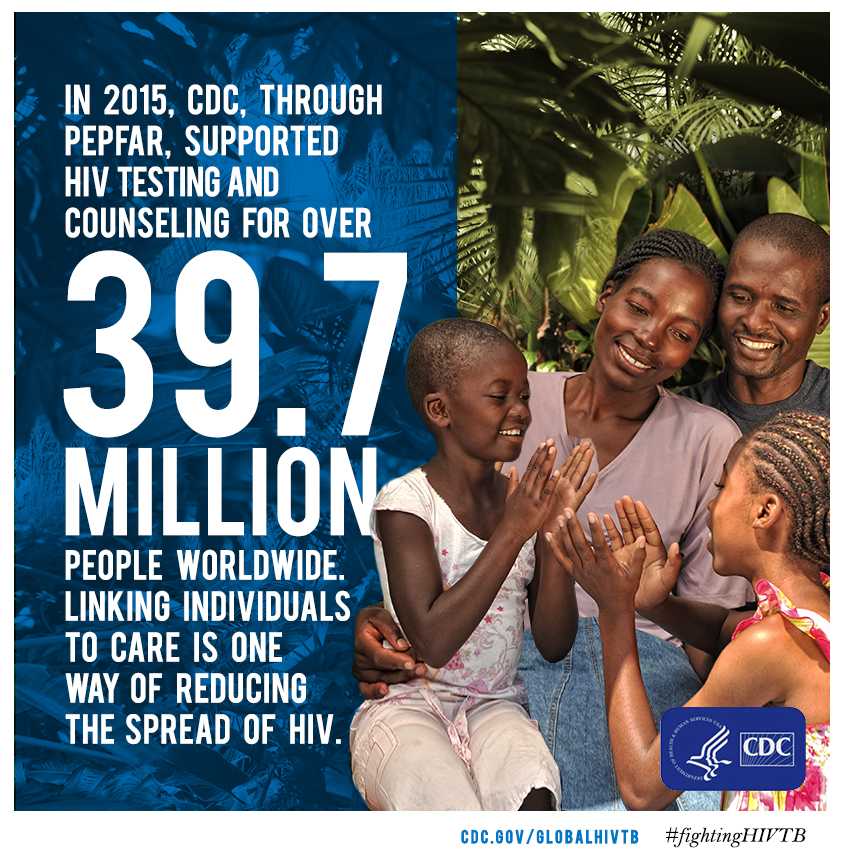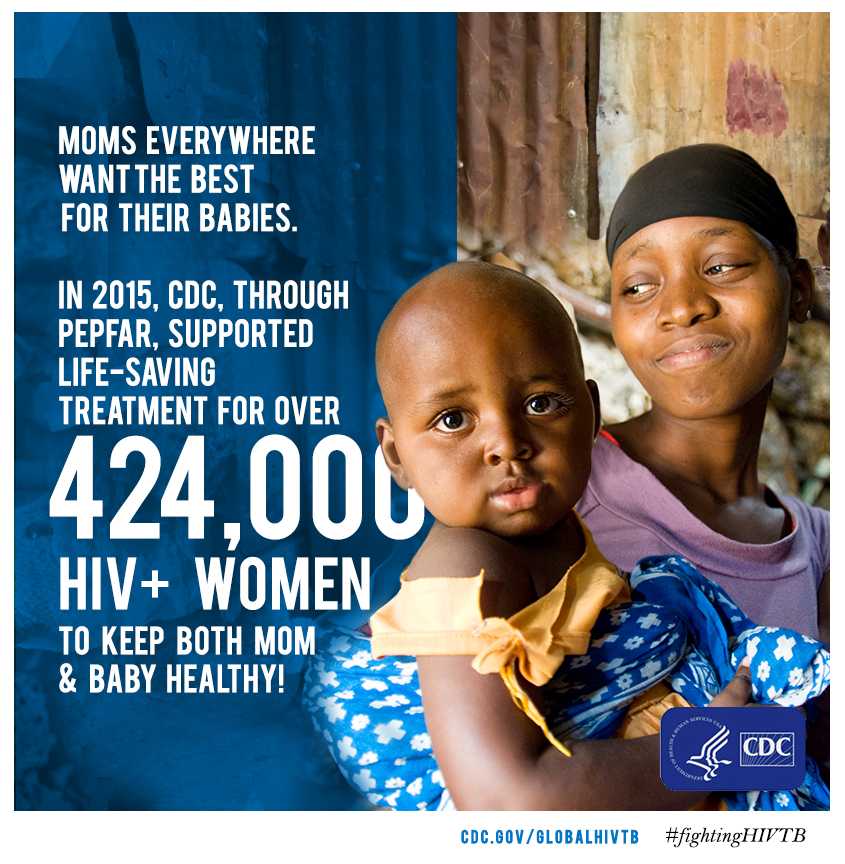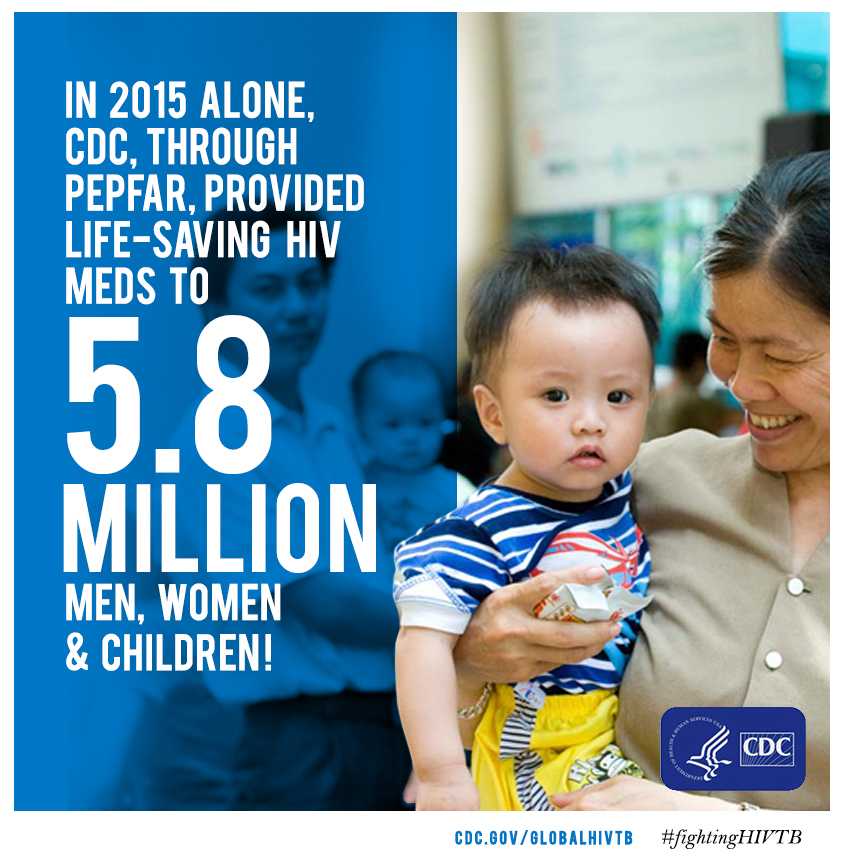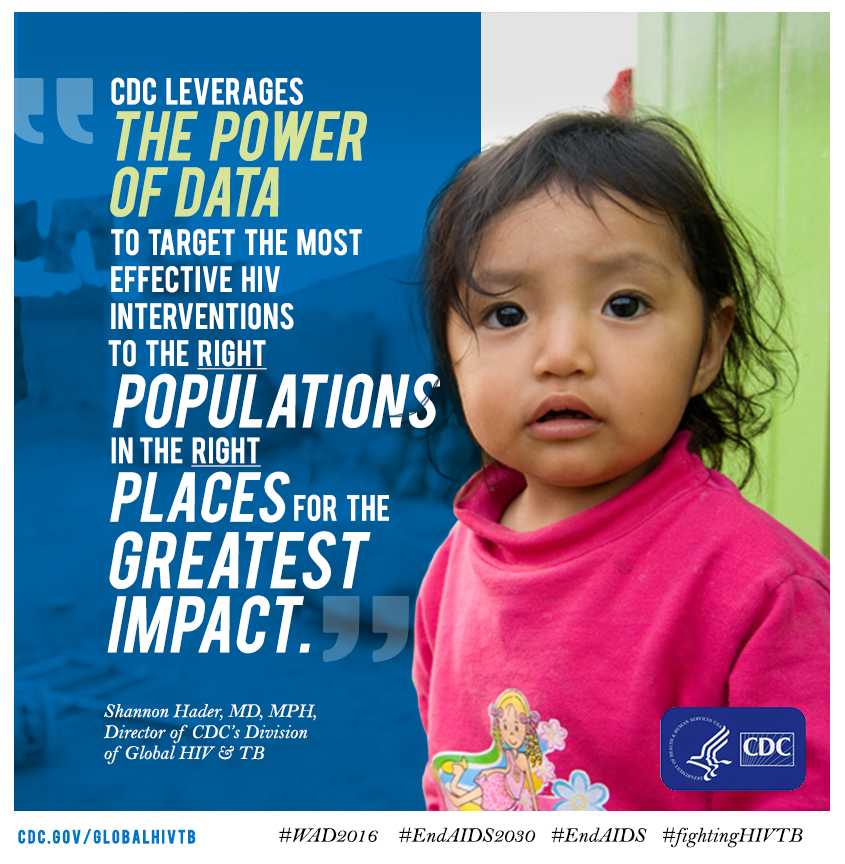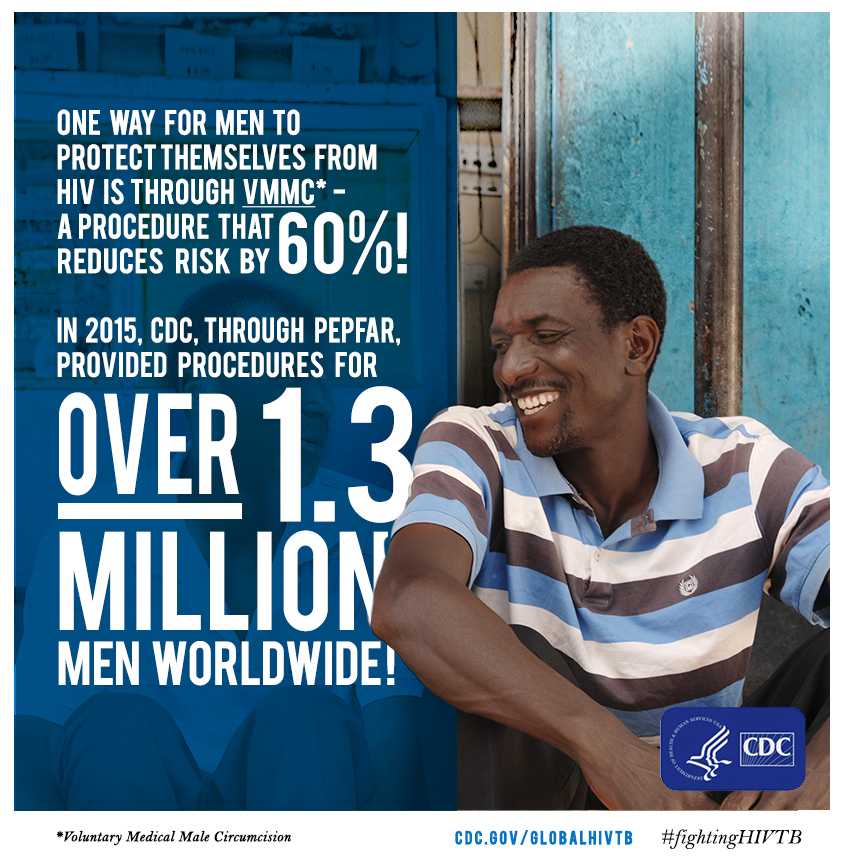World AIDS Day 2016: Leadership, Commitment and Impact in the Fight against HIV
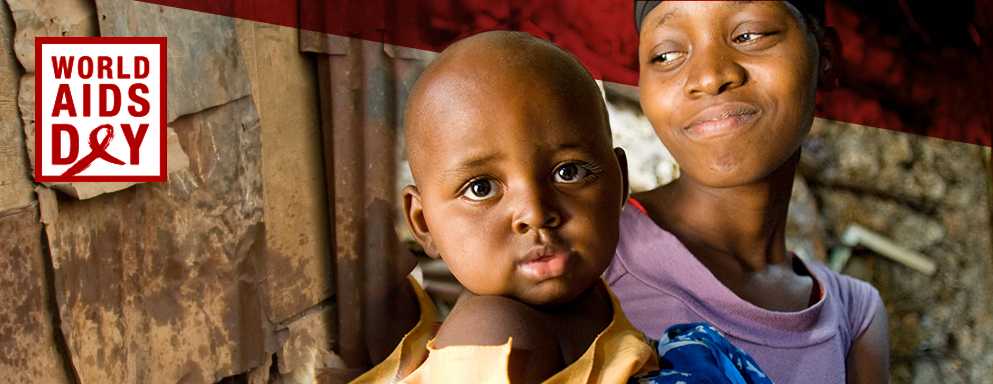
Every December 1, the world observes World AIDS Day. Thirty five years after the first cases were reported, we have more tools than ever before to fight HIV, but there is a narrow window within which we can accelerate progress towards an AIDS-free generation. Countries are working to achieve the UNAIDS’ 90-90-90 targets, which call for 90 percent of people living with HIV to know their status, 90 percent of those diagnosed to start and stay on antiretroviral treatment, and 90 percent of those on treatment to have a suppressed viral load by 2020 with a goal of ending the HIV epidemic by 2030.
Globally, there are nearly 37 million people living with HIV. In 2015, more than 1 million people died from AIDS-related causes and over 2 million people were newly infected by HIV. Two-thirds of new HIV infections occur in sub-Saharan Africa.
As a key implementing agency for the U.S. President’s Emergency Plan for AIDS Relief (PEPFAR), CDC works alongside Ministries of Health, partners, and community organizations in more than 50 countries to help them provide sustainable HIV prevention, care, and treatment services to millions of people. CDC’s innovative programs are helping countries collect and use more detailed data to target these services to where they are needed most.
Global efforts have resulted in 18.2 million people receiving life-saving treatment, millions of lives being saved and new HIV infections averted, and there are now have more tools available than ever before to end HIV. Although the world has made significant progress, much work still remains. CDC is committed to continued collaboration with our global partners to end the HIV epidemic.
World AIDS Day 2016 Message from the Director

CDC’s Director of the Division of Global HIV & TB Shannon Hader, MD, MPH authored a blog on AIDS.gov highlighting the critical role of innovation to turn the tide of the HIV epidemic. Here is an excerpt:
“As we mark World AIDS Day, we reflect on how far we’ve come and acknowledge the profound challenges that still remain. The scientific progress we’ve made since the first cases of AIDS that appeared more than 35 years ago has been nothing short of remarkable…”
Despite tremendously successful efforts to expand access to life-saving HIV treatment to over 18 million people, millions more infected with HIV worldwide have yet to access critical prevention and treatment services. We must ask ourselves: What new approaches are needed to better reach the people who haven’t been reached yet? How do we build on the services in place so far, and innovate to be even more efficient and effective?
Shannon Hader, MD, MPH
Director, CDC Division of Global HIV & TB
Morbidity and Mortality Weekly Report (MMWR)
In conjunction with World AIDS Day, CDC is releasing two studies in its Morbidity and Mortality Weekly Report (MMWR) that provide important insights to help guide the global response to HIV – particularly in high burden areas.
One study, Early Diagnosis of HIV Infection in Infants – One Caribbean and Six Sub-Saharan African Countries, 2011-2015, showed that the number of infants tested for HIV in some of the world’s countries most affected by the HIV epidemic increased significantly in recent years, but infants should be reached earlier – when their risk for death is greatest.
Another study, Progress with Viral Load Monitoring of Patients on ART – 7 PEPFAR-Supported Countries, highlights global efforts around access to viral load testing and will be published on December 2.
Stories from the Field
In 50 countries around the world, CDC experts are working side by side with partners to provide technical assistance, scientific expertise, and capacity building support to help countries in the fight against HIV. On this World AIDS Day, we highlight some examples of this work:
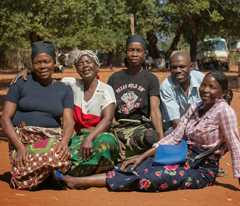
Lessons Learned from Scaling up HIV Treatment in Mozambique
CDC also works in countries like Mozambique to help expand access to life-saving HIV treatment. From 2004 to 2016, CDC, PEPFAR, the country’s Ministry of Health, and other partners, provided antiretroviral treatment (ART) to 800,000 people in Mozambique – a country with 1.5 million people living with HIV and nearly 40,000 deaths annually. While the scale-up of ART in Mozambique has resulted in several key achievements, CDC and partners encountered many real-world challenges to keeping patients on ART. It was common for patients in Mozambique to travel two to three hours to the closest health care facility, and spend up to eight hours waiting to see a clinician and receive their medicines.
In 2010, CDC and partners led a national effort in Mozambique to increase access to ART by helping the country to pilot a new treatment delivery model known as community ART support groups (CASGs). CASGs are small groups of patients from the same community who take turns collecting the group’s medications from the clinic and then bring them back to the community where it’s easier for everyone to access them. These groups not only reduce travel costs, time spent at the clinic, and frequency of visits, but according to a recent CDC study, those who participate in these groups are significantly more likely to stay on treatment than those who don’t. CDC and partners are now piloting the CASG groups in five countries around the world.
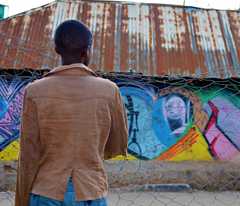
CDC Helping Young Women in Kenya Achieve Their DREAMS
Like many teen girls in Korogocho, Marlyne dreams of a better life for herself and her family. When Marlyne was 10 years old, she and her four younger siblings were left with her grandmother, who struggled to care for them. Marlyne dropped out of school, and began washing clothes in a nearby community for 50 Kenyan shillings a day (about 50 U.S. cents) to help her grandmother. She was soon abused by men in the families for whom she worked, but she couldn’t quit as her family needed the income.
LVCT Health, a CDC Kenya partner who provides health education and HIV prevention classes to young people in Korogocho, helped Marlyne return to school. LVCT Health’s One Child at a Time (OCaT) program has supported over 1,500 children age 10-17, many of whom have been sexually abused or exploited. The children’s health is monitored, and they are tested for HIV and other sexually transmitted infections. Of the children in the OCaT program, 22 were found to be HIV positive and 15 young women were pregnant. With CDC and PEPFAR support and additional donations, the OCaT program has helped over 130 children return to school.
Research shows each year young women and girls remain in secondary school, reduces their risk for being infected with HIV. The DREAMS initiative – which stands for Determined, Resilient, Empowered, AIDS-free, Mentored, and Safe – helps these girls to receive an education and help them avoid the circumstances that put them at risk of HIV infection.
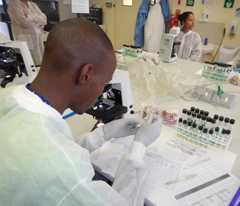
How CDC is Helping Ethiopia Fight HIV one Postal Package at a Time
CDC also knows that no one organization can do this alone. That’s why CDC’s International Laboratory Branch works with country governments and the private sector to build strong national public health laboratories which are essential for responding to the HIV epidemic. Sometimes finding solutions to pressing global health problems leads CDC down unlikely paths. Such as in Ethiopia, where postal workers probably aren’t the first thing that comes to mind when most people think of the response to HIV and TB throughout Africa. However in a country where the HIV epidemic exposed a fragile lab network, that is exactly where experts from the Labs for Life partnership between CDC, PEPFAR and BD knew they needed to start.
In partnership with the Ethiopia Ministry of Health, Labs for Life started by addressing key gaps in the lab supply chain including reducing turnaround times and increasing access to lab services. The work unveiled another crucial gap – there was no standard way to transport lab specimens. In fact, lab workers were often leaving work or shutting down labs to take specimens for testing. A custom designed course for postal and lab workers on proper packaging and handling of lab samples was developed. A standardized network through the Ethiopian postal service was created to transport and track lab specimens from clinics to labs via GPS. This resulted in reduced turnaround times for lab results by 50 percent in the Amhara region and an astounding 71 percent in Addis Ababa.
Additional Resources
To learn more about how CDC is supporting countries in their efforts to fight HIV globally, CDC’s Division of Global HIV & TB offers the following additional resources:
To stay in the know about global HIV and TB, please subscribe.
- Page last reviewed: August 23, 2017, 11:50 AM
- Page last updated: August 23, 2017, 11:50 AM
- Content source:


 ShareCompartir
ShareCompartir
